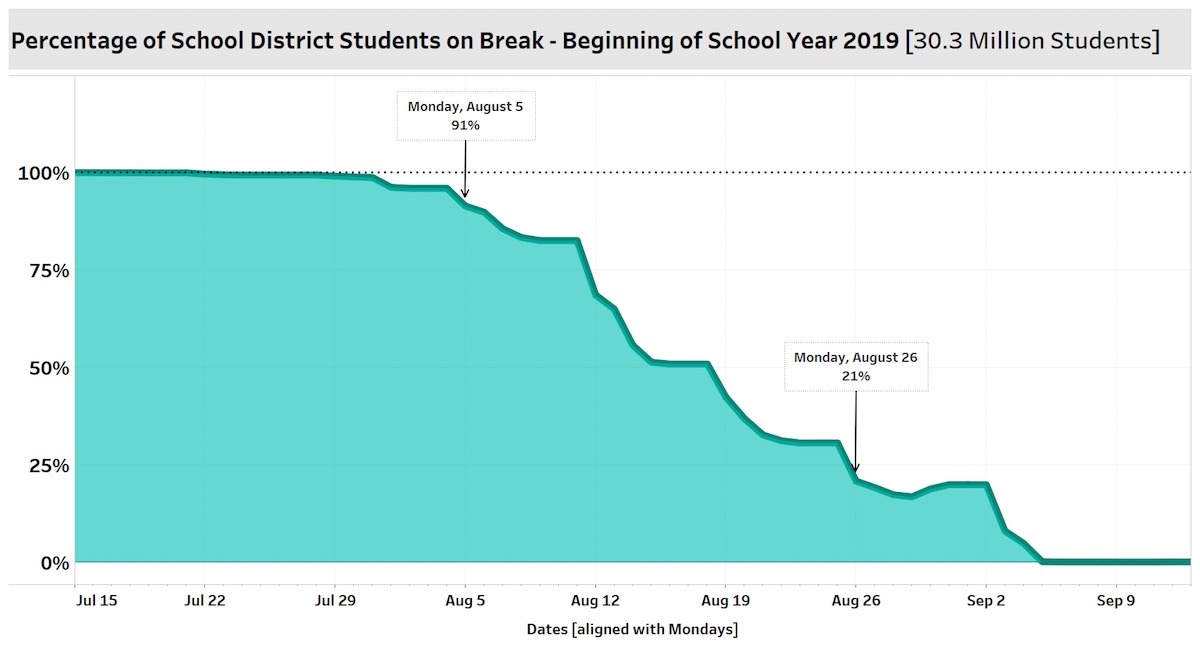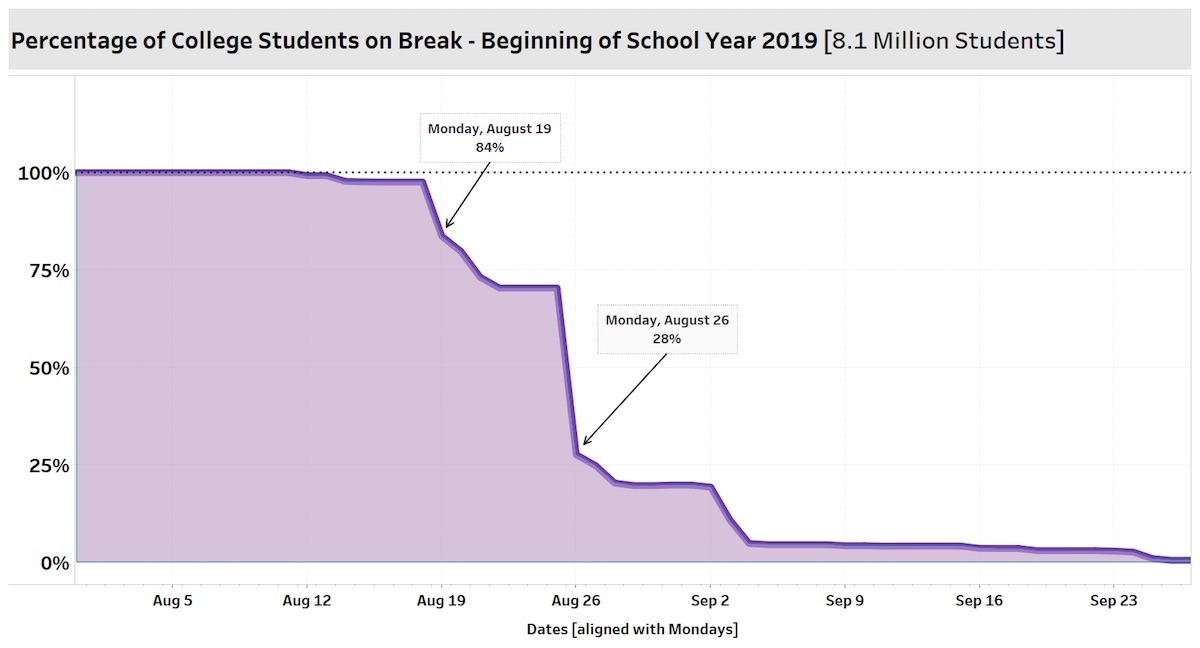HENDERSONVILLE, Tennessee—The 2019-20 School Break Report from STR shows notable shifts in school calendar dates and subsequent periods of high hotel leisure demand, with weather and variability across school districts playing a role in peak family vacation periods.
Findings from the report show that among holidays key to school-break calendars, Columbus Day, Thanksgiving, and Easter will have an effect on hotel performance in 2019-20, due primarily to a shift in dates from 2018-19.
“Columbus Day and Thanksgiving both occur a week later than this past year; that will push back school breaks for K-12 public schools, colleges, and universities,” said Chris Klauda, STR’s senior director of market insights. “This year, Easter occurred a week earlier and caused spring break shifts in K-12 public schools, but when looking at colleges and universities, the Easter change had considerably less impact on spring break dates.”
As seen in previous reports, weather has played a major role in the school calendar. The warmer the climate, the earlier school begins and ends—summer vacation usually starts in May and ends in August. For colder areas, summer vacation starts in mid-to-late June and ends in early September.

K-12 school start dates span about five weeks, with the majority beginning in August. The earliest reported start date for K-12 schools is July 17, 2019, in Arizona. The latest start date is September 9, 2019, in Massachusetts.
When looking at college and university schedules, the start date range is wider at seven weeks. However, the bulk of students start between August 19 and 26. The earliest start date for a college or university is August 12 in Florida, while the latest is October 1 in California.

The School Break Report, a forward-looking tool utilized to plan for vacation hotel demand, includes information for 1,500-plus public school districts (60 percent of all students) and more than 1,000 four-year universities (73 percent of all students) in all 50 states and the District of Columbia.











